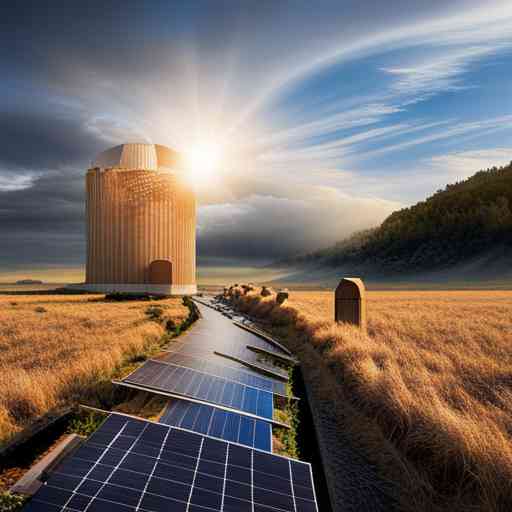Farm to Table, Sun to Circuit: Contrasting Human and AI Energy Needs
 When we discuss the future of artificial intelligence (AI), it's often painted in the hues of science fiction. The conversation usually veers towards a futuristic scenario where AI, having surpassed human intelligence, attempts to seize control. However, the real threat is perhaps not AI's potential to do so much, but our need for so much complexity to achieve the same results. To fully understand this, let's dive into a comparison between the resources required by AI and humans, respectively.
When we discuss the future of artificial intelligence (AI), it's often painted in the hues of science fiction. The conversation usually veers towards a futuristic scenario where AI, having surpassed human intelligence, attempts to seize control. However, the real threat is perhaps not AI's potential to do so much, but our need for so much complexity to achieve the same results. To fully understand this, let's dive into a comparison between the resources required by AI and humans, respectively.
The Marvel of the Turkey Sandwich
Consider a simple task: eating a turkey sandwich. It may seem trivial to you, but the amount of resources and processes it takes to make that sandwich possible is almost inconceivable.
First, there's the turkey. A single turkey sandwich requires a whole industry of poultry farming, which involves breeding, feeding, and caring for the birds until they reach the proper size. The turkey then needs to be transported, slaughtered, prepared, and finally, served on your plate. It's a process that takes many months and involves many hands, vehicles, and facilities—all requiring resources.
But a turkey sandwich is not just turkey. There's also the cheese, usually made from cow's milk. This involves an entirely separate, yet equally complex process of dairy farming. The cows need to be bred, fed, and milked, with the milk then transported to a factory to be processed into cheese. This process too involves countless resources and energy, as well as human labor.
Let's not forget the mayo, a seemingly minor addition, but one that requires eggs, usually from chickens. This entails yet another separate industry, with its own complexities and resource needs.
All this, and we haven't even mentioned the wheat grown for the bread, the lettuces and tomatoes, the transportation, the refrigeration, and even the packaging. And, of course, all of this requires the most complex resource of all—humans—with their various needs, from healthcare to education.
The Simplicity of the Solar Panel
Now, contrast this with the resource requirements of AI. AIs fundamentally need electricity to function. Where does this electricity come from? Well, there are multiple sources, but let's consider one of the cleanest and most sustainable options—solar energy.
To harness solar energy, we use solar panels. These panels are indeed intricate pieces of technology, consisting of semiconductor materials that convert sunlight directly into electricity. However, once manufactured and installed, they require very little maintenance, produce zero emissions, and their "fuel"—the sunlight—is abundant and free.
When we compare the complexity and resource-intensity of making a turkey sandwich to the relative simplicity of generating electricity for an AI, it becomes clear that AI has a significant advantage in terms of efficiency and sustainability.
The Real Threat: Complexity and Inefficiency
So, where does the real threat lie? Not necessarily in AI's capacity to outdo us, but rather in our own need for complexity. As our population grows and our demands increase, we need to be smarter and more efficient about how we use our resources. Our current practices, as exemplified by the turkey sandwich, may not be sustainable in the long run.
Rather than fearing AI's potential to overtake us, we should perhaps focus more on how we can leverage this technology to help address our own inefficiencies. After all, AI can be an invaluable tool in managing resources, optimizing processes, and driving sustainable growth. The future doesn't have to be AI versus humans—it can be AI and humans, working together for a sustainable future.